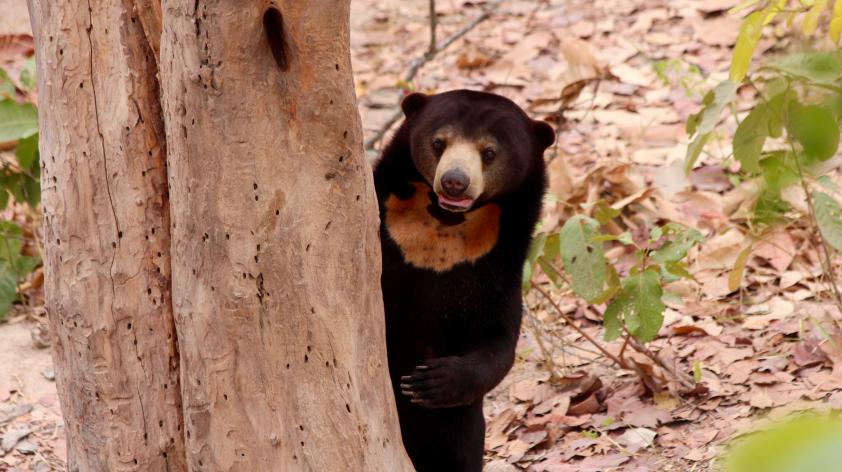
Tackling Illegal Wildlife Trade in SE Asia: Reasons for Hope
Most people know about the illegal wildlife trade in relation to ivory and rhino horn through highly publicized events such as burning of ivory in Kenya, and the death of the last male northern white rhino. However, the illegal wildlife trade (IWT) affects a wide range of animals and plants, from regions all over the world. Our work tries to address the devastating trade in a number of these less well known species.
In some areas of Asia, the trade in and consumption of wildlife parts has placed severe pressure on sun bear Helarctos malayanus, and Asiatic black bear Ursus thibetanus populations. Bear parts are used for a variety of reasons in the region, including bear bile tonics for illnesses, bear claws for protection, bear leather for handbags, bear paw rice wine, and bear meat for food. Most of these uses are considered illegal within bear range countries, and bear parts are protected under CITES from being transported across international borders.
Generally, blame is placed on China as the major consumer of bear parts. In some respects, this is true, especially given China’s larger human population; however, bear part consumption within SE Asian countries is also prevalent and pervasive. In fact, these markets may be equally, if not more significant. Based on our work to date for Vietnam, Laos, and Cambodia, prevalence of illegal bear parts use is estimated to be between 20-40% of the population in these countries, which represents a significant amount of users (and bear products).
A collaborative effort to address the illegal trade in these countries is supported by vital on-going fieldwork by San Diego Zoo Global Institute for Conservation Research (SDZG) in close collaboration with key partners Free The Bears, Animals Asia, Oxford Martin School Programme on Illegal Wildlife Trade, University of Bristol, TRAFFIC Vietnam, and local government agencies. This collaborative effort began in late 2014 in northern Lao PDR with a pilot study led by David O’Connor (SDZG Global Partnerships), Dr. Jenny Glikman and Liz Davis (both SDZG Community Engagement), Free The Bears, and members of the local government. Working with nearly 30 Lao University students and members of the local Lao Women’s Union, we conducted the first ever quantitative investigation into the drivers of bear part consumption in Lao PDR of Chinese tourists, and Lao nationals.
The motivations and beliefs of Chinese and Laos respondents were found to be significantly different, with Chinese more likely to hold conservation-positive views, and to state a preference for synthetic bile over wild bear bile. Laos individuals were less likely to know that bear populations are declining, and did not mention “cruelty to bears” as a reason not to use bear bile. This was confirmed in our 2017 study where we found that the only reasons given by Laos nationals to not use bear parts were the expense, and the perceived inaccessibility of bear parts.
From our small, initial, innovative pilot study has grown a regional, collaborative, coordinated approach to understand and minimize bear part consumption, with the ultimate goal of ending the demand for these parts.
Additionally, our work in Cambodia indicates so far that applied initiatives involving and being led by local people may be successful in changing behaviors away from use of bear parts.
Today, our collaborative network has grown to over 15 institutions involving over 60 local researchers conducting this important, locally-led, local language-based research in Vietnam, Cambodia, Lao PDR, Myanmar, and Singapore focusing on the trade not only of bears and bear parts but of saiga horn, tiger parts, and Asian elephant skin and parts. The road is long, but by working together and gathering information that will directly inform campaigns to reduce demand for these products, that will resonate with local populations, we have hope to end the use of these illegal wildlife products.













